People think it's weird for civilian shooters to own body armor. There's even a bill going through Congress to make it illegal for civilian ownership. But these folks don't think it's weird for welders to own welding hoods or fire extinguishers or for guys with racecars to have 5-point harnesses in their seats. I get it, those other things don't look scary, but safety devices are important for your hobbies. Things can go wrong when shooting, just like any other sport or martial art, so it's consistent for anyone involved in shooting to have proper safety equipment. Eyes and ears are basics for about anything, but body armor is pretty specific to shooting.

If you don't mow your yard in body armor and borderline obscenely short cutoff shorts, does it even count?

I never noticed how small my lawnmower is...
Truth be told, armor is a very valid part of gun culture. These infringements on our culture aren't appreciated and they're being noted as the cultural attacks that they are . Every one of my friends that has a gun has at least one set of armor. Not only is it a safety device, but many people consider it part of the second amendment, who's spirit is to endorse civilians being just as armed as the people that attempt to reign over them. I agree, but not in the name of a nostalgic piece of faded paper; rather in the name of equality and nobody having a natural born right to rule over me.
Enough philosophy, y'all already know where I stand on all that. Let's talk about my basic setup.
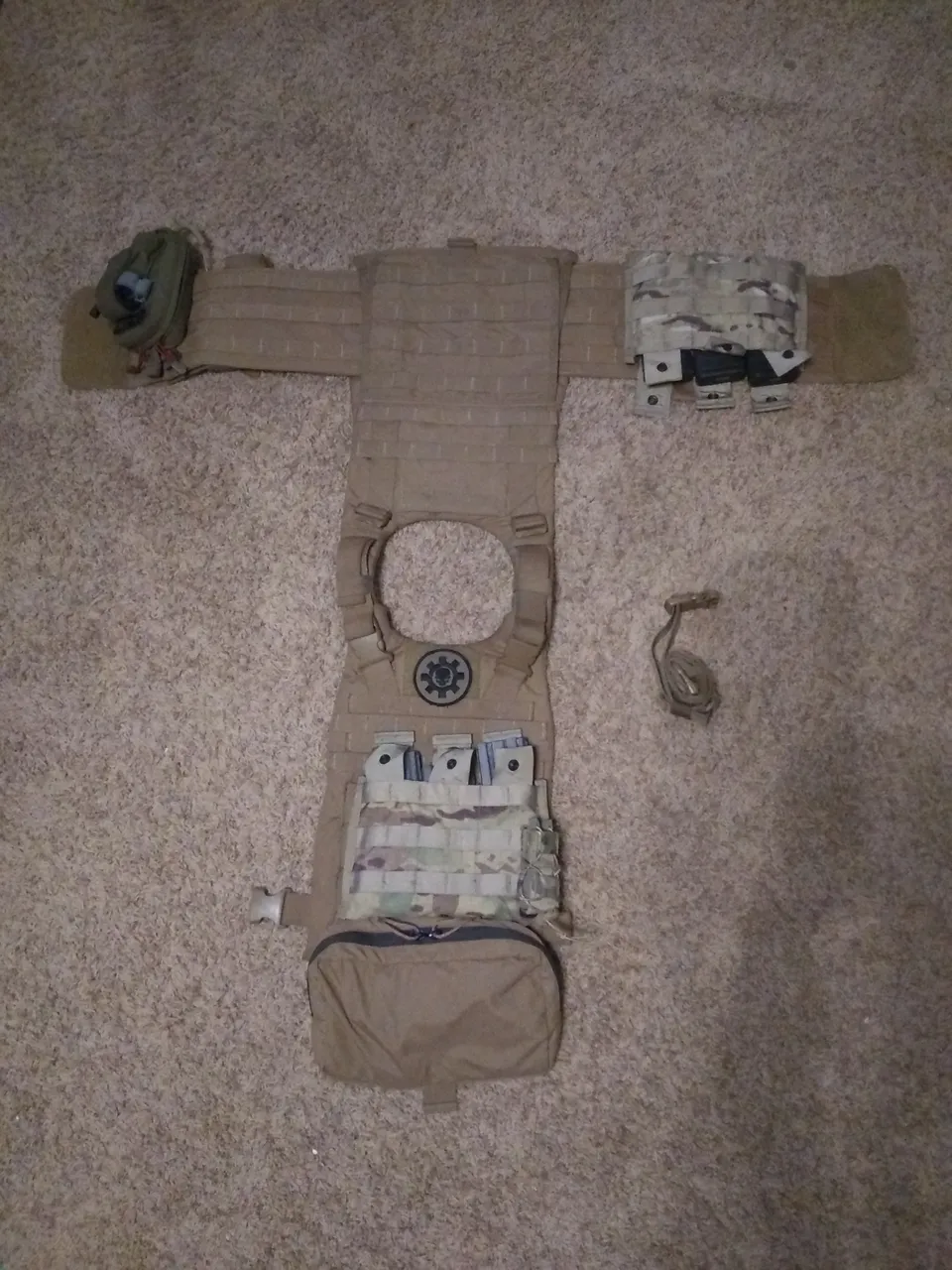
Plate carrier with full cummerbund.
My plate carrier, the vest that holds ballistic panels called plates, is a military issue piece of equipment that's made by KDH for the US Marine Corps. Currently it is outfitted with level IIA soft armor inserts and level III rifle armor plates. The IIA rating is enough to protect from most accidental issues I might encounter when shooting with my friends. It is rated to stop a bullet from a 9mm handgun, as well as fragmentation from bullets and bombs. The level III hard armor is rifle rated up to 7.62x51mm NATO projectiles moving up to 2700 feet per second. This is a substantial limitation, especially considering that the smaller, faster, more common M193 5.56x45mm NATO round easily defeats level III armor, especially steel plates like mine. These plates were a gift from a friend. I'll be saving up for lighter stronger ceramic level IV plates soon, at which time these steel plates will be used as armor in my truck, mounted behind the seats.
For loadout, I keep three mags on the front plate bag and three on the left cummerbund. They're all oriented for access by my left hand when I reload. I keep my Individual First Aid Kit (ifak) and the pull cable to quickly detach my plate carrier on my right side and a dangler/admin pouch on front for other helpful items. There's a pistol mag pouch on the front mag shingle too, but it'll probably go away when I get a belt set up.
The limitations of this setup are apparent when reloading. The deep, full coverage of the magazines in these USGI shingles makes for a difficult grip on the mag, making it harder to precisely handle when inserting it in the rifle. I'll have to find a way to deal with that. Training will help until I get some money saved up to get more advanced mag pouches.
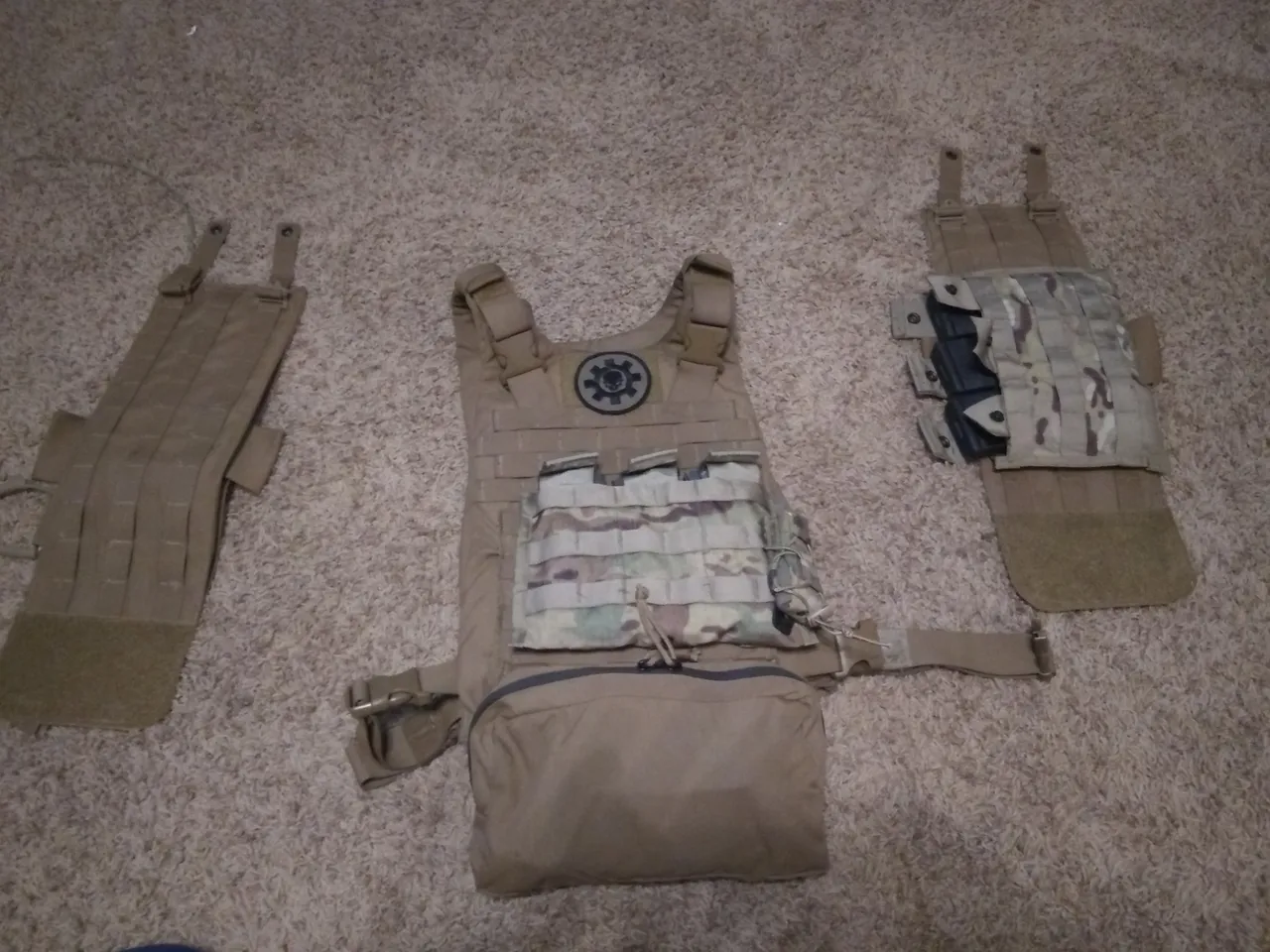
Plate carrier with clip straps
My cummerbund wings come off to allow a more minimalist lightweight setup with a simple strap to hold the carrier in place. I'm not sure yet which way I prefer to have it set up because I haven't ran around enough in both configurations yet. Lots of ideas change when you actually train in your body armor. What you think will work when you look at your armor is not necessarily what will work when you run in it. From my first bit of training with the clip strap, it makes my shirt ride up into the vest when I run, but does allow for much better ventilation and draining of sweat. After wearing it for a morning of yard work, sweat was literally pouring off of my armor. It's good to get to know such things, and wearing your armor for everyday tasks is a convenient way to learn them.
The reason I picked this particular plate carrier is because it was available and met my immediate requirements. I've owned three or four sets of body armor, so I have a basic idea what I like. I know I don't like a full vest because of the awful mobility. I know I don't like Chinese vests because of the quality. When this came up available from a guy in my new men's group, I picked it up in exchange for 300 rounds of ammo and two magazines. About $100 cash value. I'm not sure what these carriers go for, but that was a good deal to me. With the generous gift of the hard armor plates, plus the cost of the mag carriers, I'm in this setup for about $130 outside any bartering. That's some cheap insurance.
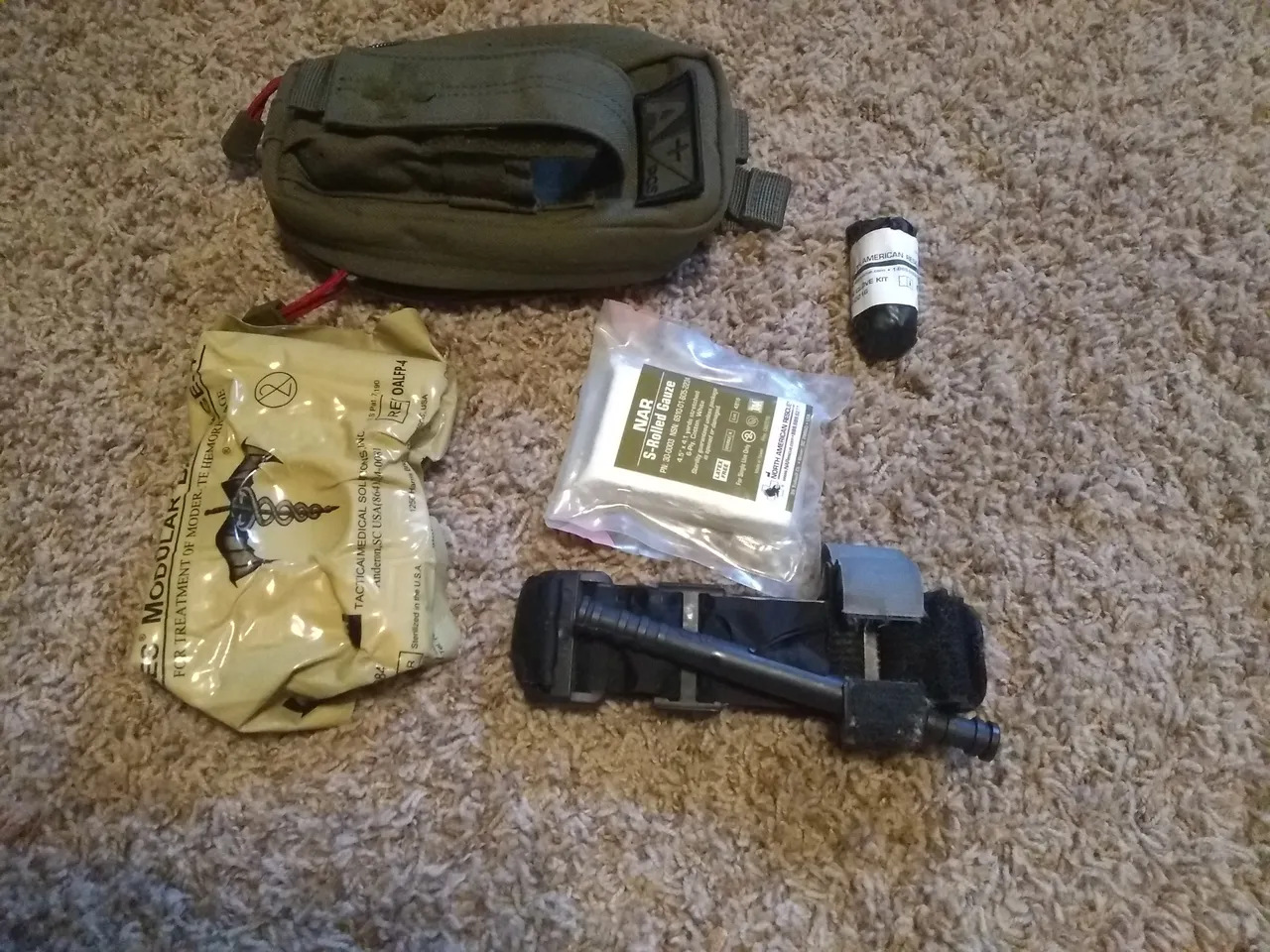
Basic IFAK contents
Being a safety device for when you're using guns, it's sensible to have a first aid kit on hand to treat some other things that can go wrong with guns. A standard ifak on a plate carrier is a tourniquet and plenty of gauze. The basic recommended tourniquet is called a Combat Application Tourniquet or CAT. These need to be bought from a reputable source, as they're commonly counterfeited and sold for very cheap. A real CAT usually runs around $30. I have an olaes modular bandage as well for wound packing and other bleeding applications. It has gauze, an occlusive dressing, a pressure cup/eye cup, and a compression bandage all built into one product. It's a quality piece of medical kit that's been used in a lot of trauma situations. If you buy one, buy a few. Open one up and familiarize yourself with its contents and packing so you won't be fumbling around with it when your buddy is bleeding and you're looking at a fancy bandage for the first time wondering what the hell to do with it. I also carry an extra compressed gauze package. Medical is something you really need on a body armor setup. My own kit, while capable, is very basic and could use some more development. I've got a fair bit of civilian first aid training to use the equipment I have. I don't have a nasal pharangeal airway or a decompression needle in my kit because I don't have training on them. You don't want me poking needles and such in you, I don't know how the hell to do it and it might make you die. Sound fair?
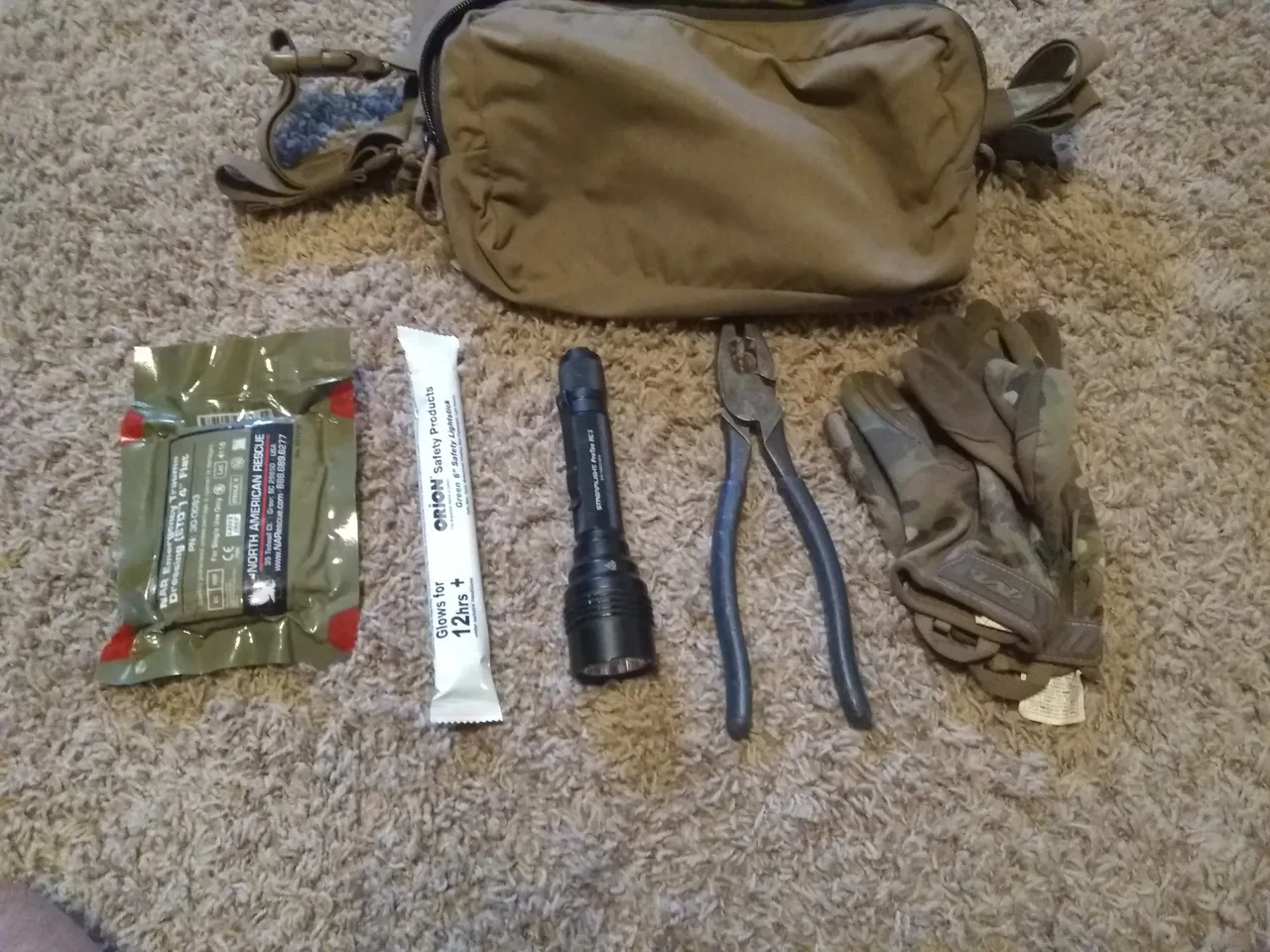
What's in my dangler/admin pouch?
A dangler or admin pouch is a really handy thing to have on a plate carrier setup. A place to store a notebook, gloves, or candy can make a big difference for your experience. In mine, I keep another bandage, a light stick, a nice flashlight, some heavy pliers/wire cutters, and my shooting gloves. There's room for more, depending on what we're doing at the range that day, but that pretty well rounds it out. The light products are pretty self explanatory, along with the gloves and bandage. I've actually had a lot of range days though where those pliers have come in really handy. Most notably was when I lost the nut that secures the bolt that holds up my steel target and I had to use baling wire to secure the target to it's stand. That works really well until you shoot the wire, and having pliers and cutters really helps make that more convenient. Something I'll be adding is a write in the rain notebook and a couple of pencils. Range notes are super handy when you need them. A small 10X monocular would be cool for close-up spotting out to a couple hundred yards. That'd be great for sighting in rifles so you wouldn't have to make the whole 50-100 yard walk with every three-round group.
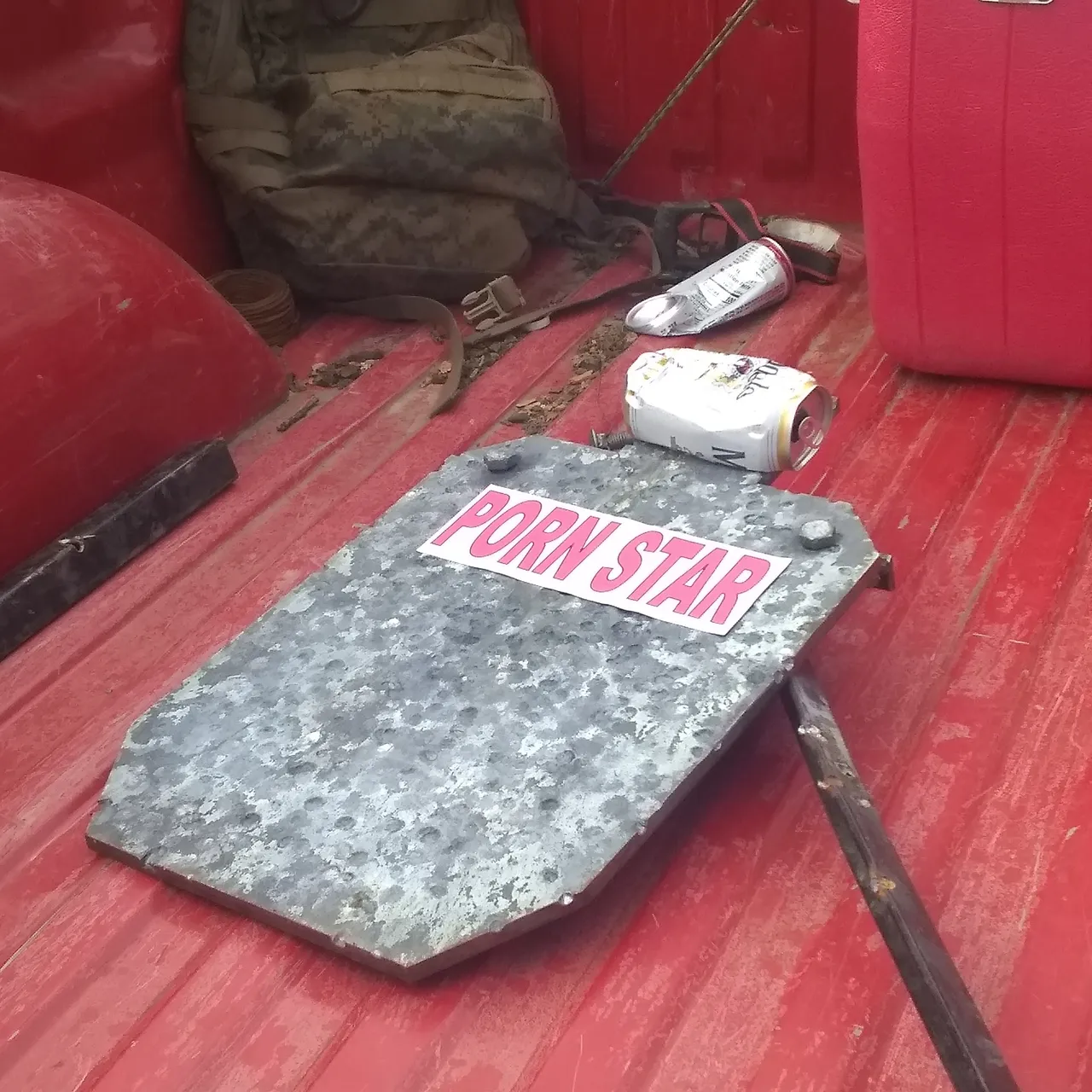
A bit of friendly vulgarity is customary in gun culture.
Outside of shooting and tactical training, I think these recent riots show a solid case for civilian use of body armor. It wouldn't have helped the folks that got shot in the face, but it absolutely would have helped the young woman I watched live streaming that got hit with a year gas canister that split her nipple in two. That's the whole thing about the right to self defense. It's a right against tyranny, however it shows it's head. That's what my posts lately are about; empowering people, regardless of whether their beliefs completely line up with mine, with a little more information to physically defend themselves.
If this post helps you do that, then great. I succeeded. If you're unconvinced of the importance of being able to defend yourself, I don't know how to convince you. I won't make anyone buy or use any of the same things I do, that's nonsense. But I also take affront to folks telling me what I can't buy or use.
Thanks for reading, I hope this is useful to you.
Love from Texas,
Nate 💚